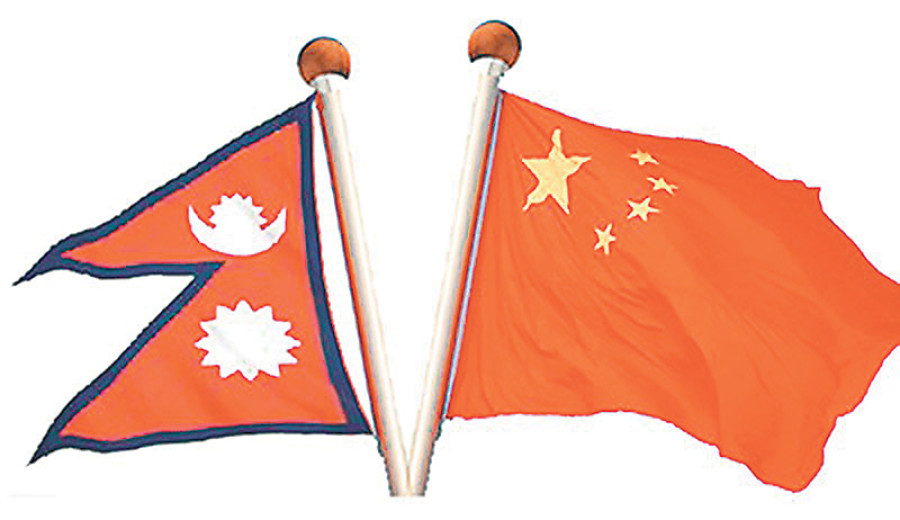Opinion
Cooperation across the snows
Nepal and China have joined hands to work for mutual socio-economic development
Suman Kumar Regmi
In 2009, Nepal and China established the Comprehensive Cooperative Partnership with everlasting friendship as its defining feature. China plans to extend rail services to Nepal after the Lhasa-Shigatse-Kerung rail service comes into operation. China has pledged repeatedly to extend meaningful support to Nepal to achieve the common goal of socio-economic development. China has helped Nepal to develop trade and infrastructure including dry ports, roads and railways.
Trade interactions
China has given importance to economic and trade interactions between neighbouring countries for healthy bilateral relations. Nepal has been requesting China to simplify the quarantine process, recognise the quality standardisation certificate issued by Nepal and harmonise the working hours of the customs offices of the two countries to boost bilateral trade. The government has begun to follow up on past Nepal-China agreements. In March 2016, the two countries signed the Transit and Transport Agreement. A memorandum of understanding on launching a joint feasibility study on the free trade agreement with China and the agreement on building oil storage facilities in Nepal under Chinese assistance is yet to be completed.
Nepal and China have been discussing the implementation of all the agreements signed between the two countries at different times. During the 11th joint consultation mechanism meeting held in 2017, the two sides discussed bilateral relations as well as the Belt and Road Initiative agreement. Nepal-China economic cooperation, investment, trade and connectivity and other deals signed between the two countries have been discussed many times.
While visiting supermarkets in the Kathmandu Valley, anybody can find apples imported from Thailand, beer from Ireland and clothes from many overseas countries. Foreign goods have become available everywhere in the country. Consumer attraction towards overseas products is not bad. But it may affect the economy if poor quality and hazardous goods are imported into the country. Wholesale and retail trade accounts for 13 percent of Nepal’s Gross Domestic Product (GDP). But the industrial sector accounts for only about 6 percent of the GDP. Massive imports into the country have reduced job creation and encouraged capital outflow.
The government has been discouraging the import of agro products like rice, flour, pulses and edible oil, among others. Importers have been importing paddy, wheat, mustard and lentils in bulk quantity and processing these products in the country. The government wants maximum value addition to imports. Foreign rice, flour, pulses and edible oil dominate the market as importing finished products is more profitable due to the low customs duty. The government may raise the customs duty on such products. The uncontrolled import of cheap agro products is gradually distorting the country’s agriculture production base.
This proposed action will boost agro processing industries as importers will invest in them. The government is taking steps to launch a programme to substitute the import of milk, dairy products and meat in the coming years. The government plans to make the country self-sufficient in sugar, leather footwear, cement and pharmaceuticals. By enhancing the competitiveness of local industry, the government will encourage domestic cement producers to export their products. Low investment is the major bottleneck to industrial growth; and if the industrial sector gets assurances that investments will be protected, it will encourage fresh investments in priority sectors. The government has laid emphasis on enhancing the competiveness of export oriented products like jute goods, carpets, yarn and handicrafts, among others.
Currently, Chinese goods are being imported over the Kerung-Rasuwagadhi overland route. Imports through the Tatopani border point was disrupted after the 2015 earthquake. Tatopani is expected to resume operations after the Friendship Bridge on the Nepal-China border is rebuilt. Tatopani has been slowing returning to life after the 26-km Barhabise-Tatopani road destroyed by the earthquake was repaired. All tourism and business activities in this border town in Sindhupalchok district had shut down following the earthquake. After the damaged road was reopened, locals returned to start their lives anew. The district is still recovering from the earthquake disaster.
Flood disaster
Recovery was further slowed when the region faced another catastrophe after the Bhotekoshi River bursts its banks in July 2016. China has been saying it is ready to restore and open the quake-damaged Kodari Highway as early as possible and expedite bilateral trade through the old Sino-Nepali route. As Beijing has been encouraging Nepal to take active part in its Belt and Road Initiative, Nepal has been pressing China to reopen the highway which is the main and oldest road link between the two neighbours. A number of agreements including a transit-transport agreement and an accord to import petroleum products from China have been signed, but they have not been implemented.
Regmi is a former deputy executive director of the Trade and Export Promotion Centre




 10.12°C Kathmandu
10.12°C Kathmandu











